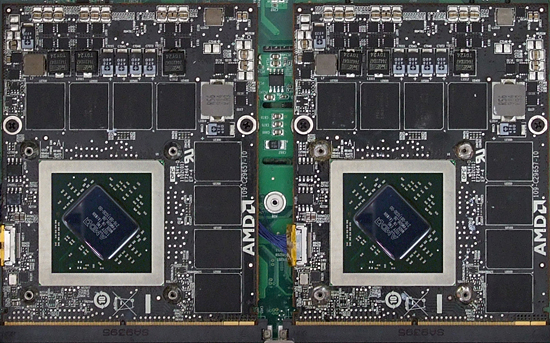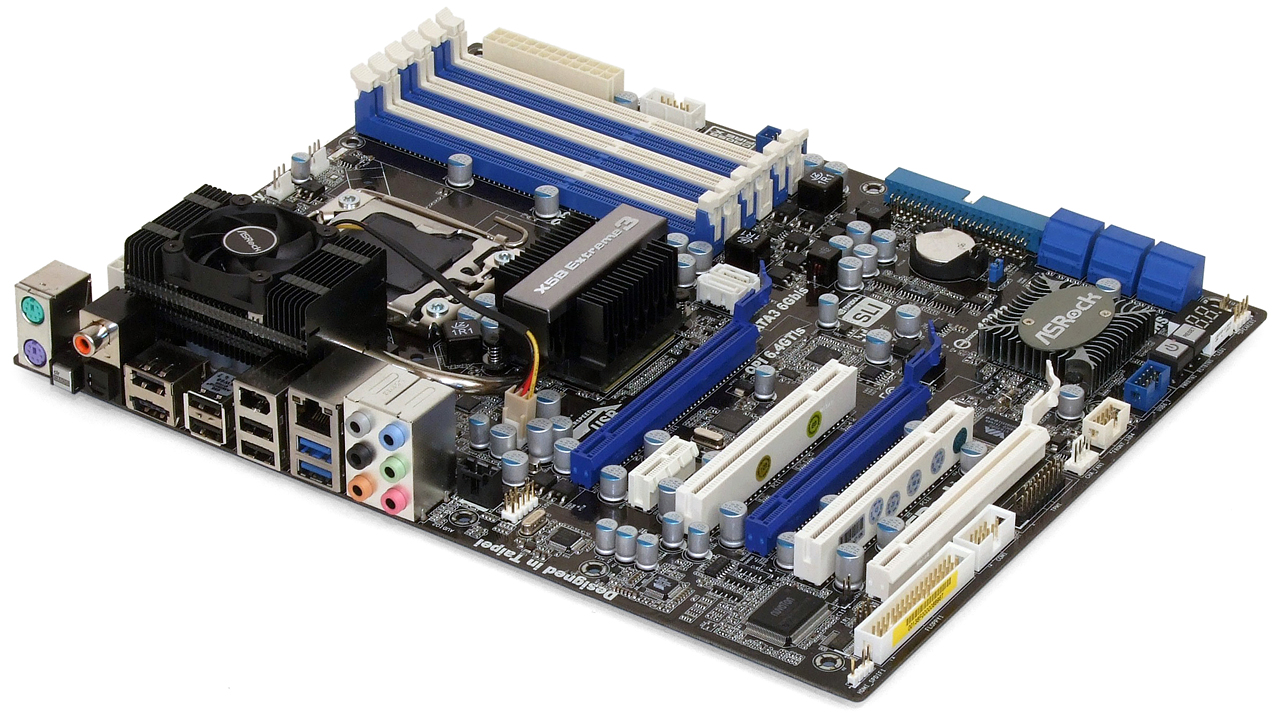Radeon HD 6990M And GeForce GTX 580M: A Beautiful Lie
We’ve been more than outspoken about the naming AMD and Nvidia use for their mobile GPUs. Are they really trying to mislead buyers, though? We briefly examine their methodology and frame that against the limitations of high-end mobile computing.
Test Settings And Benchmarks
| Test System Configuration | |
|---|---|
| CPU | Intel Core i7-990X (Gulftown), LGA 1366, 3.46-3.73 GHz, 12 MB Shared L3 Cache |
| RAM | 3 x 4 GB DDR3-1333 CAS 9-9-9-24, 12 GB Total |
| Desktop Motherboard | ASRock X58 Extreme3, BIOS P2.80 (10/31/2011) |
| Mobile Platform | Clevo X7200 X58, BIOS 1.01.12 (06/21/2011) |
| Radeon HD 6990 Desktop Graphics | AMD Radeon HD 6990 4 GB (2 GB x2) 830 MHz GPU Core, GDDR5-5000 Desktop Catalyst 11.11 Display Driver |
| Radeon HD 6990M Mobile Graphics | Clevo Radeon 6990M 2 GB (x2 for CrossFire) 715 MHz GPU Core, GDDR5-3600 Mobile Catalyst 11.11 Display Driver |
| GeForce GTX 580 Desktop Graphics | GeForce GTX 580M 1.5 GB 722 MHz GPU Core, GDDR5-4008 Desktop Driver Version 280.26 |
| GeForce GTX 580M Mobile Graphics | GeForce GTX 580M 2 GB (x2 for SLI) 620 MHz GPU Core, GDDR5-3000 Mobile Driver Version 280.26 |
| Hard Drive | Intel SSDSC2MH120A2: 120 GB, SATA 6Gb/s SSD |
| Sound | Integrated HD Audio |
| Network | Integrated Gigabit Networking |
| Software | |
| OS | Microsoft Windows 7 64-bit |
Although a desktop builder could put two dual-GPU Radeon HD 6990 graphics cards into a single system, notebook builders are stuck with two GPUs at most. MXM modules are simply too small to accommodate two large GPUs, let alone the power circuitry and doubled-up memory resources. So, we're going to put AMD’s mobile graphics in the best possible light by comparing two of its mobile Radeon HD 6990M modules to a single desktop Radeon HD 6990.
Nvidia isn’t getting a pass for its own indiscretions. We're also comparing a pair of its GeForce GTX 580M graphics cards to a single GeForce GTX 580. Nvidia's solution can't be included in as many of the tests, since we no longer have access to the mobile modules we'd need in order to run some of our newer benchmarks. That also explains why the older 280.26 display drivers were used. But it's worth noting that Nvidia is guilty of the same naming practices.
Fortunately, our legacy gaming suite include GPU-busters like Just Cause 2 and S.T.A.L.K.E.R.: Call of Pripyat.
Notebook motherboards are generally pretty limited with regard to their features. So, a budget desktop motherboard using the same chipset makes for the most accurate comparison. ASRock’s X58 Extreme3 fills the need for desktop graphics connectivity.
| Benchmark Configuration | |
|---|---|
| Legacy 3D Games | |
| Crysis | Patch 1.2.1, DirectX 10, 64-bit executable, benchmark tool Test Set 1: High Quality, No AA Test Set 2: Very High Quality, 4x AA |
| Just Cause 2 | Version 1.0.0.2, Built-In Benchmark "Concrete Jungle" Test Set 1: Medium Details, No AA, 8x AF Test Set 2: Highest Details, 4x AA, 16x AF |
| S.T.A.L.K.E.R.: Call Of Pripyat | Call Of Pripyat Benchmark version Test Set 1: High Preset, DX11 EFDL, No AA Test Set 2: Ultra Preset, DX11 EFDL, 4x MSAA |
| Recent 3D Games | |
| DiRT 3 | V1.01, Run with -benchmark example_benchmark.xml Test Set 1: High Quality Preset, No AA Test Set 2: Ultra Quality Preset, 8x AA |
| Metro 2033 | Full Game, Built-In Benchmark, "Frontline" Scene Test Set 1: DX11, High, AAA, 4x AF, No PhysX, No DoF Test Set 2: DX11, Very High, 4x AA, 16x AF, No PhysX, DoF On |
| StarCraft II | Version 1.4.1.19776, Tom's Hardware custom map Test Set 1: High Texture, High QualityTest Set 2: Ultra Textures, Extreme Quality |
Get Tom's Hardware's best news and in-depth reviews, straight to your inbox.
Current page: Test Settings And Benchmarks
Prev Page Mobile Model Shenanigans: What's In A Name? Next Page Benchmark Results: Crysis

